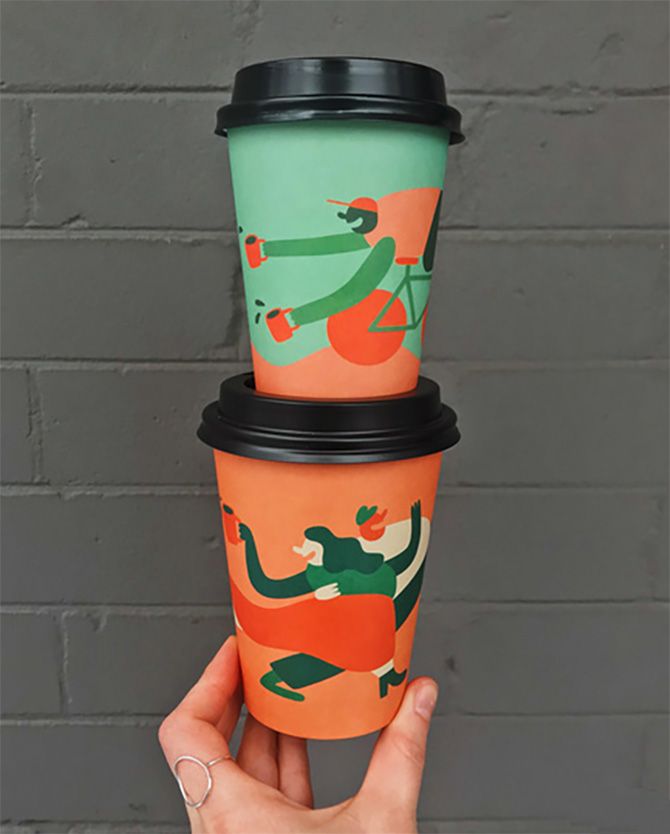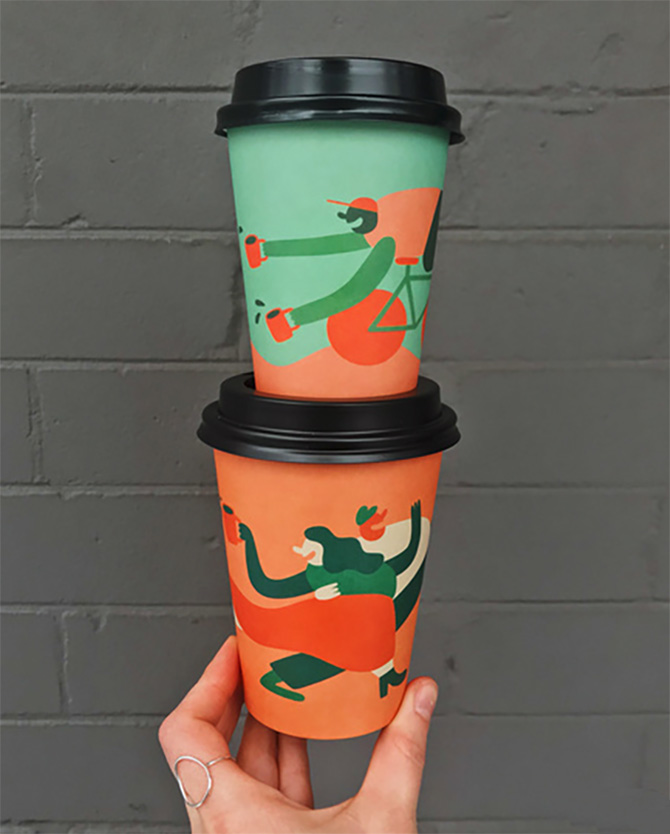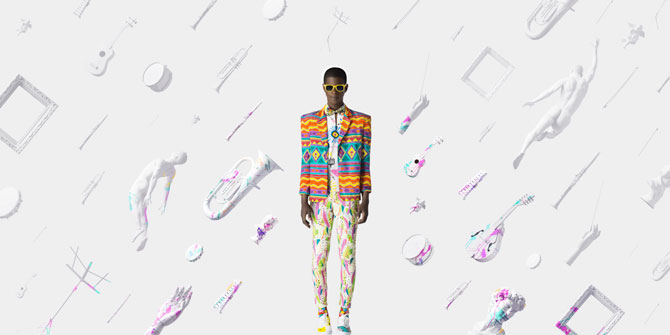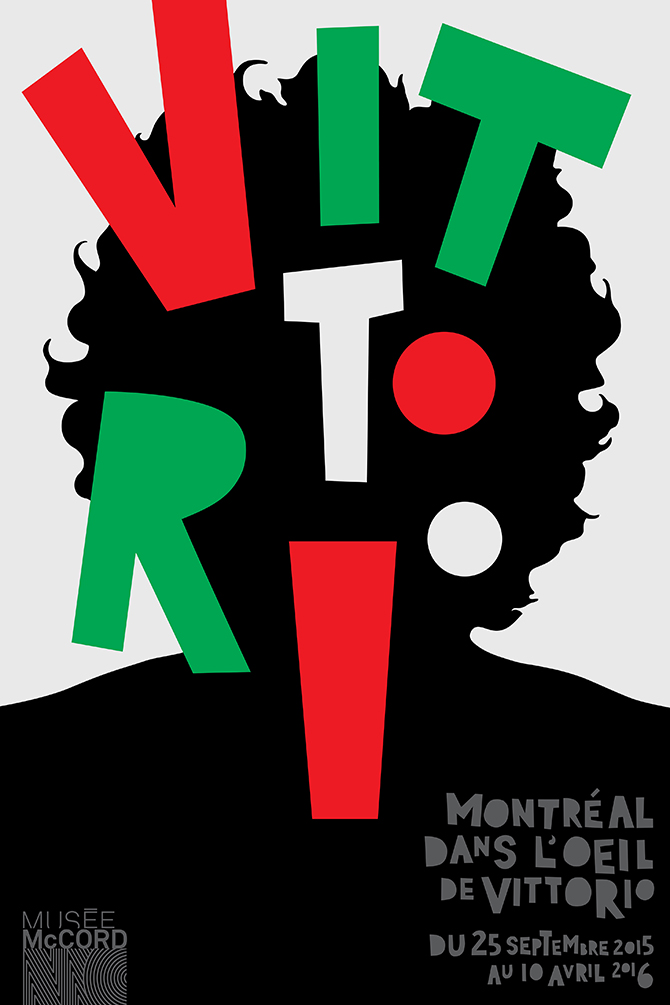THE CREATIVITY COUP
June 21, 2018

When it comes to creative achievement, Quebec is making some bold moves. Writer Will Novosedlik explores how historical events, cultural awakenings and decades of political support have positioned the province as a "Silicon Valley of creativity"
Anyone who’s leafed through an Applied Arts annual over the last few years will know that you can’t turn the page without bumping up against a pile of award-winning work from Quebec. Seems like there are a lot more awards flowing to Montreal and Quebec City than any other part of the country.
To determine whether or not this is just an illusion, let’s get quantitative for a minute. In the 2017 Design Awards annual, for instance, there are 194 award-winning entries from across the country (including a handful from the US). Of that total, 62 awards went to Quebec practitioners. When we look at that on a per capita basis, taking into account that the combined population of Montreal and Quebec City is 2.6 million, the math tells us that the 7.1 per cent of the Canadian population that lives in those two cities produced 32 per cent of the awards. Compare that to Ontario, where the combined population of greater Toronto and Ottawa is about 7.65 million. The 21 per cent of Canada’s population that resides in these two cities is responsible for only 43 per cent of the awards. By these indicators, Quebec is definitely punching way above its weight.
A look at the 2014 Photography & Illustration Awards annual shows that out of 208 winners, 52 were from Quebec—exactly 25 per cent. And here the competition is a bit tougher, as there were 34 winning entries from outside of Canada. Strip them out and Quebec’s share of Canadian winners jumps to 30 per cent, a proportion very close to that of the design category. So what in heaven’s name is going on? Is it something in the water? (During our interview for this article, illustrator Pol Turgeon agreed to send me a bottle of Montreal tap water, just in case.) Or has it always been that way and we just didn’t notice before?

While it would be misleading to judge the quality of an industry by its awards, annuals are really the closest thing we have to records of the creative industry’s output—and they do reflect, for better or worse, the informed opinions of industry leaders. Assuming that as a starting point, it still looks like Quebec creative is kicking ass. So is this creativity a cultural trait? Is it the result of historical circumstances? Government support? Exceptional post-secondary education?
According to market research leader Jean-Marc Léger, creativity is one of the key differentiators that distinguishes Quebec culture from the rest of Canada. In his recently published book Cracking the Quebec Code, he cites a total of seven key differentiators. One is what he calls “neutral”: Quebec’s easygoing attitude. Three are positive: joie de vivre, creativity and pride. And three are negative: a tendency to be noncommittal, a sense of victimization and a village mentality.
According to Léger, the last of these is most relevant to creativity. “The reality of village life forced Quebeckers to respond to the harsh climate and isolation with creative solutions,” he says. “When you are in a village, you create out of necessity. You have no one to lean on except yourself and a few neighbours. Look at the snowmobile, which was invented by Joseph-Armand Bombardier after his son died of peritonitis because the winter conditions prevented him from getting to a hospital. We invent a lot of things here because we have had to in order to survive.”
But certainly one could say the same thing about the rest of Canada. Quebec may have brought us the snowmobile, the AM radio, peanut butter and the Wonderbra, but English Canada can claim everything from the zipper to the telephone to frozen food to the commercial jetliner, and more. So there has to be something else.

Léger adds that creativity in Quebec is boosted by the “shock” of having to integrate with different cultures, claiming that Quebec’s unique culture combines the imagination of the French, the organizational skills of the English and the optimism of the Americans. In other words, Quebec is not, as English Canadians might imagine, a totally French culture. Again, you could say that Toronto or Vancouver are anything but solely English-speaking cultures. There are almost 200 languages spoken in Toronto, making it the most diverse big city in the world. While we agree that cultural diversity stimulates creativity, Quebec can make no exclusive claims in this regard.
It would be imprudent not to consider the historical context. Having witnessed the rise and fall of the sovereignty movement since the 1970s; the introduction of Bill 101 defining French as the sole official language in Quebec and the related court battles that were waged for decades afterwards; the exodus of anglophones and their head offices; and, of course, the two Partis Québécois referenda, one cannot deny that the Quebec of the ’70s, ’80s and ’90s was hell-bent on protecting French language and culture. Says Pol Turgeon, a Quebec-based illustrator whose work has graced these pages since the ’80s, “The situation of Quebec as a cultural island has made the artists stronger in defending their identity. There is this need to fight for who we are.”
That fight has benefited from plenty of government support for cultural organizations and the arts, which are critical platforms for the assertion and nurturing of a strong cultural identity. That support continues today, and you can see it in the client mix of much of the award-winning work depicted in the pages of this magazine. Consider Studio Baillat. Here is a very creative enterprise that is fuelled by work for clients such as the Musée des beaux arts de Montréal, Musée d’art contemporain de Montréal, Elektra Digital Arts, the Festival international de jazz de Montréal, as well as cultural and entertainment projects for Red Bull. Says studio founder Jean-Sébastien Baillat, “Design driven by culture is very strong in Montreal. Working with cultural clients allows us to do great work.” (Read more from Baillat on p. 38.) Claude Auchu, executive chairman and head of design at lg2, agrees: “We are over-indexed in the cultural aspects of Quebec and Montreal. We have a lot of cultural institutions and festivals. These are created for the Quebec market and that creates lots of opportunities for designers and ad people—and the nature and quality of that work influences everything else.”

Cecile Gariepy
In this context, one example of Quebec’s cultural power outshines all others: Cirque du Soleil. It is difficult to overestimate what it has done for both Quebec and its creative community. Both Sid Lee and Moment Factory owe a big part of their success to Cirque, which in its early days was heavily funded by government support (albeit federal, not provincial). When we spoke with Baillat for this article, he was in Dubai creating content for 45 Degrees, a global events company owned by Cirque du Soleil. Cirque is Quebec’s great creative entrepreneurship story. What started as a couple of local street performers has become an international company of over 4,000 performers, generating annual revenues of $845 million by the time it was purchased by US private equity firm TPG Capital.
This characterizes the changes that have taken place in Quebec since the ’90s. Jean-Marc Léger agrees, noting that the culture in Montreal and Quebec City has moved on from being in defence mode and has opened itself up to the outside world. While Quebec used to be a place where advertising meant adapting English creative from Toronto or New York to the local market, agencies have turned that on its head and are now producing original work for Quebec and other markets that is globally relevant. As Sid Lee’s global executive creative director Kristian Manchester says, “In the last 10 years, agencies here have realized that even if they are only producing work for the local market, their ideas are based on universal truths. This has given us the confidence to work all over the world.”
Another noteworthy trend in Quebec is an interest in entrepreneurship, and there are few businesses more entrepreneurial than creative services. As Léger explains, “Ten years ago, seven per cent of Quebeckers wanted to create their own business. Today, it’s 21 per cent and among millennials it’s 42 per cent. So this is a new trend. It means we want to take control of our own economic destiny, unlike in the past, when people were much more apt to wait for the state to provide jobs for them.” Manchester adds that this interest in entrepreneurship is aided by the relatively low cost of living and real estate in Quebec, which attracts start-ups of all kinds. He reminds us of Mile End, the neighbourhood that incubated artists and bands such as Arcade Fire, and helped Montreal to earn a reputation as the global capital of indie rock.
Then there is the emergence of Quebec as a gaming design hub. Gaming is a $3-billion business in Canada, and 29 per cent of gaming studios are in Quebec. Outfits like Quebec-based Ubisoft attract all the skills necessary in the production of video games and grow whole ecosystems of creative support, adding to the multidisciplinary texture of Quebec’s creative community.

It would be a mistake to overlook the influence of education. Fifty years ago, there was a commission to evaluate the teaching of arts in schools and one of the results was the design program at Université du Québec à Montréal (UQAM). Like other design schools in Canada at the time, the faculty was often European, with many coming from the Bauhaus tradition at places like Ulm and Basel. According to both graduates and teachers there, UQAM’s program has always been focused on creativity. Says Judith Poirier, professor of typography at UQAM for 25 years, “We are focused on the process, the brief, and on pushing students’ thinking beyond the brief.”
When asked why she thinks we are seeing such a flourish of creativity in Quebec, she doesn’t have a clear answer, but admits that UQAM has played a significant role in developing it. She also credits the Quebec education system. Often students will attend CEGEP (a publicly funded college that’s post–high school, pre-university) for three years, specializing in a creative discipline, and then another three years at UQAM, so that by the time they enter the market they have had six years of specialization. In the rest of the country, it takes that long to get a Master’s degree.
So let’s take stock for a moment. It’s becoming clear that the heightened creativity we are witnessing in Quebec has resulted from the combined impact of all of the factors discussed above. Just like Detroit at the height of its industrial power, where the concentration of auto manufacturing giants naturally attracted all of the feeder industries—parts manufacturers, tool and die makers, industrial designers and automotive marketing specialists—Montreal’s mix of creative disciplines, cultural institutions and events, excellent post-secondary education, government support and unique history have co-created the kind of industry clusters that are necessary for innovation. It’s like the Silicon Valley of creativity.
In recognition of its burgeoning creative cluster, Montreal was invited in 2006 to be a UNESCO Creative City, part of a global network that includes Berlin, Brasilia, Buenos Aires, Mexico City and the abovementioned Detroit. According to Marie-Josée Lacroix, the City of Montreal’s design commissioner, “UNESCO is not saying when you have this designation you are already a world design capital, but that you have demonstrated you have all the assets to become one. When you are invited, UNESCO says, ‘Join us, share your best practices with other cities—this will accelerate the growth of your sector and your city based on this industry.’”

lg2
Back in the ’80s, the federal government ordered a study of Montreal’s economic decline at that time and judged that the city needed to support the development of future-focused industries. They settled on design, aerospace and technology. So long before the concept of the “creative class” was even a germ of a thought in economist Richard Florida’s head, Montreal was getting busy building one. “That’s over 25 years of support for design and creativity,” notes Lacroix.
“Our mission,” she continues, “is to enrich and increase the quality of the lived experience in Montreal. We try to raise the awareness of citizens through different kinds of strategies. We have the procurement process—and we try to procure locally and be a good client—and then we have initiatives that promote design, [such as] an event called Open House Design Montreal, which invites all design firms that have won design awards [to] open their doors for a weekend to the public. We push architecture, landscape, anything that impacts citizens’ lives—but our mandate is also to promote designers to other potential clients and the general public.”
When you think about it, creative cities such as Montreal have many historical precedents. Think of Florence or Rome at the height of the Italian Renaissance, Amsterdam in the 17th century, or Paris in the late 19th century. When we look at these centres, we can see very similar patterns of patronage and practice. The legacy created by these periods and locales has cemented their place in history forever.
Quebec’s unique position in North America has presented it with many challenges not experienced by other Canadian cities. And what it did to respond to those challenges—make a conscious investment in culture, creativity, design and technology—has set it on a course that may allow it to join the ranks of history’s great urban crucibles of creativity.

_____
Will Novosedlik is a regular contributor to Applied Arts. He’s worked both as a consultant and client on brands such as Telus, TD Bank, Bata International, Vodafone and Deutsche Telecom in Canada, the US, North Africa and Europe.
This article was originally published in the Summer 2018 issue of Applied Arts. See more images in the top slider.







